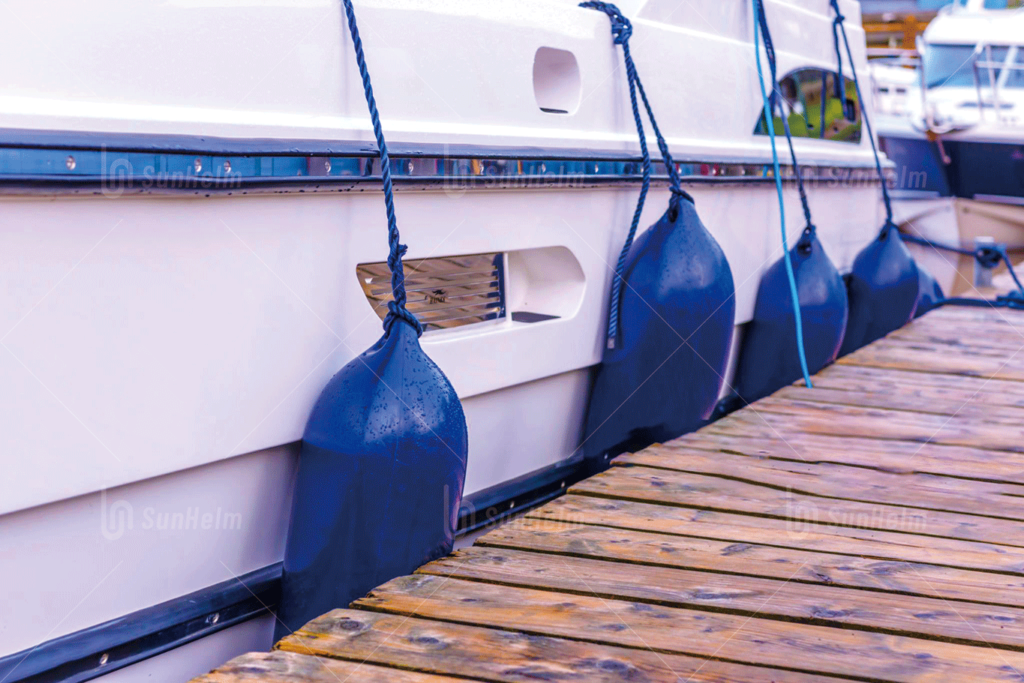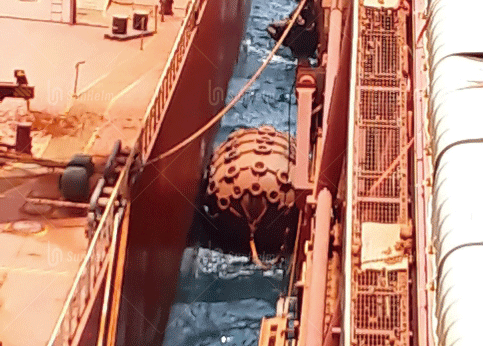What Are Inflatable Marine Fenders?
Inflatable marine fenders protect vessels and docks by absorbing impact during berthing, mooring, and ship-to-ship operations. They provide a lightweight and flexible solution compared to solid fenders. Boat owners and port operators prefer them because they can easily deploy, deflate, and store them. Therefore, whether you manage a marina or operate large cargo ships, inflatable marine fenders ensure safer docking.
Types of Inflatable Marine Fenders: Yacht Fenders vs Pneumatic Fenders
Yacht Fenders
Yacht fenders serve small boats, sailing yachts, and leisure crafts. Manufacturers usually make them from PVC or TPU and offer them in cylindrical, spherical, or oval shapes.
- Compact and lightweight — you can handle and store them easily.
- Quick deployment — you inflate them within minutes.
- Affordable protection — they offer great value for private boat owners.
However, yacht fenders provide limited energy absorption. Consequently, they cannot handle heavy-duty berthing or protect large vessels.

Pneumatic Fenders
Pneumatic fenders work best for large ships, offshore platforms, and industrial berthing. Manufacturers reinforce them with multiple rubber layers to withstand extreme impact forces.
- High energy absorption with minimal reaction force.
- Durable and versatile — ports, ship-to-ship transfers, and ship launching projects rely on them.
- Extra protection — many operators add chains and tyres to guard against sharp objects.
As a result, pneumatic fenders dominate in commercial ports, offshore terminals, and demanding marine environments.

Comparison Table
| Feature | Yacht Fenders | Pneumatic Fenders |
|---|---|---|
| Vessel Size | Small yachts & boats | Large ships & tankers |
| Material | PVC / TPU | Reinforced rubber |
| Energy Absorption | Low | Very high |
| Applications | Leisure docking | Port berthing, STS, launching |
| Cost | Lower | Higher |
Structure and Materials of Inflatable Fenders
Inflatable marine fenders contain an inner bladder, outer shell, reinforcing straps, and an inflation valve. Manufacturers often choose natural rubber or synthetic composites because these materials resist seawater, UV rays, and temperature extremes. In addition, quality valves maintain stable internal pressure, ensuring consistent performance even under heavy loads.
How to Choose the Right Inflatable Marine Fenders
Selecting suitable marine fenders requires considering several factors:
- Vessel size and weight — larger vessels require pneumatic fenders.
- Docking conditions — stronger currents or high tides demand higher energy absorption.
- Storage space — yacht fenders take less space when deflated.
- Budget and certification — always request ISO 17357 or equivalent compliance.
Therefore, calculate your required energy absorption first, compare specifications carefully, and request test reports before purchasing.
Installing Inflatable Marine Fenders
Proper installation guarantees maximum performance and safety:
- For yacht fenders: Position them evenly along the hull where contact occurs. Secure them with ropes or adjustable straps to prevent slipping.
- For pneumatic fenders:
- Inspect the docking area and remove sharp objects.
- Inflate gradually while monitoring internal pressure.
- Fasten them with chains, hooks, or dedicated brackets.
- Keep a safe clearance between the hull and dock.
In addition, operators should always check installation points before every use to avoid unexpected failures.
Maintaining Marine Fenders
Regular maintenance keeps marine fenders in excellent condition:
- Routine checks — inspect for leaks, worn areas, and valve damage.
- Cleaning — wash with fresh water to remove salt and debris.
- Storage — deflate and store them in a cool, dry place away from sunlight.
- Repairs — patch small punctures quickly, but replace heavily damaged fenders to ensure safety.
Moreover, schedule periodic inspections if the fenders operate in rough marine environments.
FAQ About Inflatable Marine Fenders
Q1. What are inflatable marine fenders used for?
They protect vessels and docks by absorbing impact during docking and mooring.
Q2. Are yacht fenders and pneumatic fenders interchangeable?
No. Yacht fenders suit small leisure boats, while pneumatic fenders handle large commercial vessels.
Q3. Can inflatable marine fenders be repaired?
Yes. You can patch small holes, but severe damage usually requires replacement.
Q4. How long do they last?
High-quality inflatable marine fenders last 8–10 years if maintained properly.
Q5. Do pneumatic fenders need special storage?
Yes. Always keep them dry, shaded, and away from sharp objects for longer durability.


